A little further with agricultural design : the solar barn this time a little more grungy
November 7th, 2009What the hell can a cow dream about?
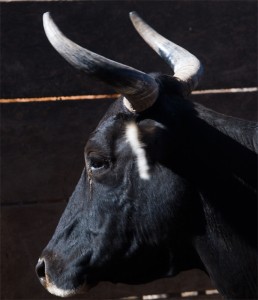
Simple : about this
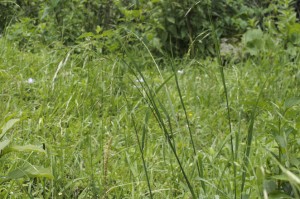
And this
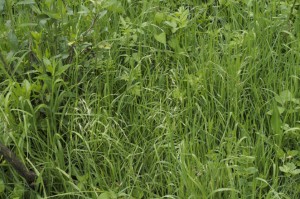
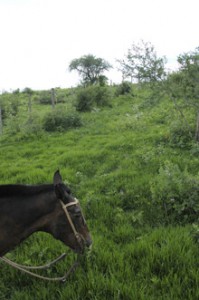
herbs
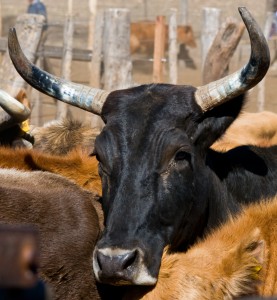
But here in the Argentinian North West, in summer you cant dry tadalafil no prescription it, it rains too much, it rots.
We already made the design of a solar barn to dry it up. But who wants to put a dime on grass.
What a weird idea? Grass? It is not serious.
Can’t smoke it.
So we reviewed the copy of our report and came back with a new one : the barn is less glamourous, less techno, it lacks this space shuttle look that farmers like so much, with buttons, computers, noise… now it works with absolutly no machinery, only sun and some small tricks of course :

The hay is thrown on a big rolling walkway, made of recycled farm nets, actioned by a pedal and simple machanism which makes it go 2meters by 2 meters, just enough to spray the hay evenly. The barn is 30m by 10m. Once the sort of pathway is totally covered, the barn is shut the more hermeticly possible. The sun heats the roof, and the air flies away through special chimneys, which look like metallic chef whirling hats; a bit like the mad whirling dervich cook. By doing so it creates a depression, which attracts the air coming from apertures under the hay. The hay is relatively close to the roof so it gets the heat from it, but the air coming from under and passing through, prevents it from cooking. A piece of cake.
The trick? The air coming and going is accelerated by a vortex-like system of cones continuously renovating the air at a fast pace to dry it up quickly. The interior of the barn is cleverly organised to reenforce the whirlwinds, avoiding dead angles which could create counter streams and with small devices to gear humid condensations at the right places. Done, the rabbit is in the hat. The barn is 100% controled by the sun.
It was crucial for us to persevere in this project and insist with it instead of letting it be immolated it on the altar of GMO progress. Just look at what will happen to the cattle in winter if we dont react… new born calves and pregnant cows forced to eat the ground ; just like the people starving in Haïti, you would say?
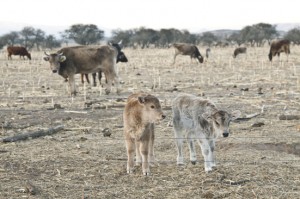
No, not as bad, here the cows are more lucky than human beings… engineers are taking care of them. All around the world, young agronomists have been taught that you need to feed cattle on corn. You would not even think to give them grass, would you? You cant get a better value than with corn; and it is so easy to grow with GMO technologies; you dont have to think, just buy the seeds, the herbicides, pesticides, fertilizers that go with them, machinery to spray everething on your well compacted and flat field. If you cannot afford all this, you will easily get a loan. Good boy, you are now sustaining a whole economy. Yes you can.
Hopefully, things are changing, slowly. One thing: just remember that corn produces more fat than meat, which is very good when your cow does not move; if not, it will loses it. It is probably why we have created feedlots, sort of concentration camps in which animals are stockpiled to be force fed without moving. 60 to 80% of Argentinian meat is produced this way, same with Brasil, same in France.
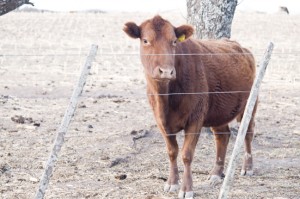
The dream team is with the GMO soy cattle-cake. You press the soy oil for cars and give the remaining to the cows. 70% of the cows in France are fed on this. France is now number one importer of GMO soy cattle cake from Brasil. GMO crops are forbidden in France, but the cows which are eating GMO soy in their barn without being able to move, are they GMO? Of course not, logic.
“Colonizar a Amazonia pela pata do boi” “conquer Amazonia by the hoof of the ox”, the great motto of the Brasilian politicians since the seventies is more hype than anytime. To feed each French you need 458sqm of Amazonian soy, according to Greenpeace. And it goes on, the consumption of meat in this year of crisis has risen by 28% in France and since the seventies soy production in Amazonia went from 0 to 21 million hectares. Progress never stops.
But back to our cows; here once the corn has grown, in order to keep food for winter, you let it dry up on its’ pod or you convert it into silo bags; the big black plastic bags laying with big old tires on top, a bucolic neat countryside. The corn is crushed and put to fermentate until the next winter. This method works perfectly in a laboratory, but in nature it is not always easy to control and sort the bacterias which are going to produce the lactic acids and the yeast which are going to produce alcohol. Oh, sweet little devils.
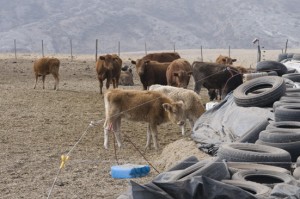
The young calves you see here are totally drunk, loaded, not a single one can walk straight, “they dont need to drive, its’ not too bad” Would you say? In fact alcohol hits directly on the liver which is the place where the immune defenses are constructed, a sort of control tower of your immune system. Not the best thing to do do when you start in life, isn’t it? These calves are going to spend the rest of their life at the vet. To avoid spending a little more today, you will spend a lot more later.
The key problem in Argentina is here : the price of meat is blocked by the government; 20 cent euros a kilo. You cant make a living anymore by producing meat, everybody abandons. “Only the ones on natural pastures can cope”, tells me an agronom engineer. But everybody carries on with corn and soy. Argentina just announced in November 2009 a deficit of 3 million calves. No you are not dreaming, we are talking about Argentina and agronomers… a famous French comic used to say “You put them in a desert, 3 weeks later they come to clame for more sand.”
To produce 1kg of meat you need 7 to 10 kg of food. Quite a carbon footprint; here, according to the calculations we made, on the yields we got this year 12t/ha i.e. 8t/ha dry of GMO corn; I cant say if it is due to the seeds or local conditions. On the other hand well managed pastures can provide 20 to 60 tons/ha. Once it is sown, it comes back every year. No use to buy more seeds, to plant, just harvest. Between this and corn, what would you choose? Corn of course. Logical?
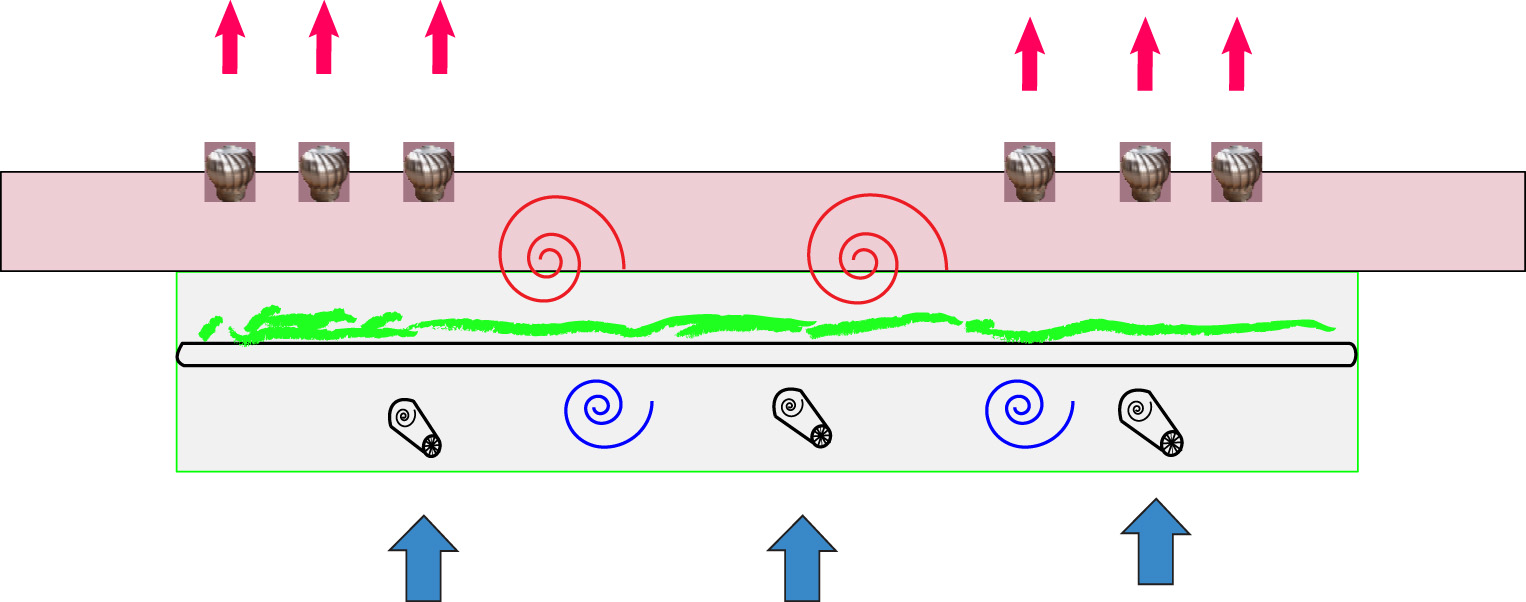
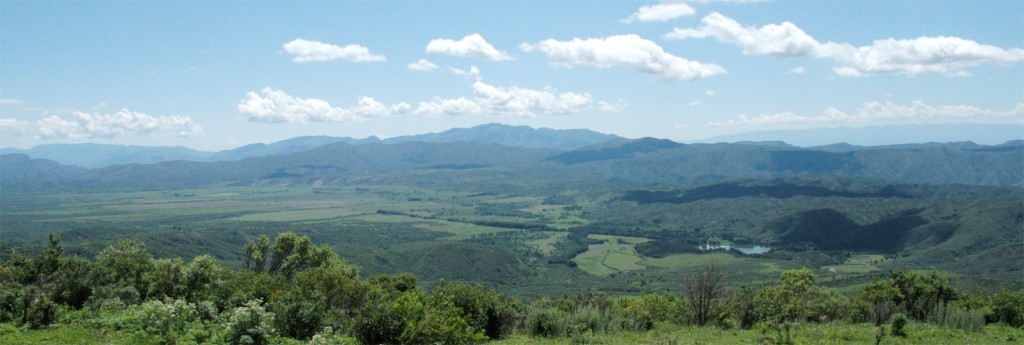
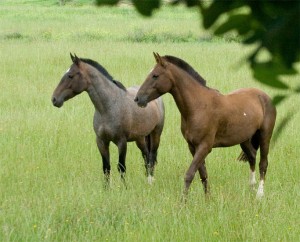 ; dont forget that the primary biotope of horses is wood.
; dont forget that the primary biotope of horses is wood.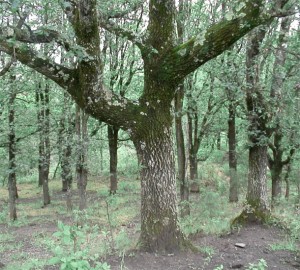 If you have an old forest close by, you will link it with your young trees by a path of wood chips which will make a web between all the trees, which will make the mycelium run.
If you have an old forest close by, you will link it with your young trees by a path of wood chips which will make a web between all the trees, which will make the mycelium run.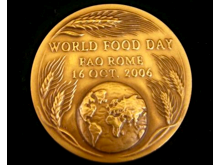 in Peru, the origin of the potato and its’
in Peru, the origin of the potato and its’ 